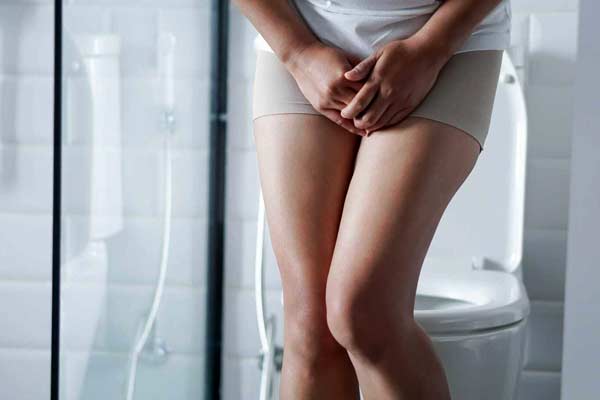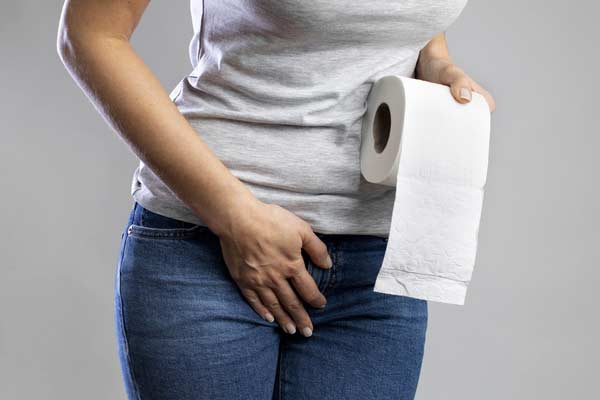Having lived with fibromyalgia for several years, I comprehend the profound influence this condition can exert on various facets of one’s life.
One less talked about area of impact is bladder function. Over the years, I have come across many individuals with fibromyalgia who also experience bladder problems.
This led me to research the potential connection between fibromyalgia and bladder problems in more detail, and I want to share my findings with you.
Key Takeaways
- Fibromyalgia can indeed cause bladder problems, including an overactive bladder and interstitial cystitis.
- Pelvic pain, a common symptom of fibromyalgia, can contribute to bladder dysfunction.
- Certain fibromyalgia medications can impact bladder function, but lifestyle modifications can help mitigate any adverse effects.
- If fibromyalgia-related bladder problems persist or worsen, it is essential to seek professional help.
Understanding Fibromyalgia: A Brief Overview
Fibromyalgia is considered a rheumatic condition affecting the joints and soft tissues.
The symptoms of fibromyalgia are numerous and varied. Some of the most common include:
- Widespread pain and tenderness throughout the body
- Fatigue and sleep disturbances
- Mood changes, including depression and anxiety
- Cognitive difficulties
The exact reason behind fibromyalgia is not completely clear yet, but it’s thought to result from a mix of genetic, environmental, and lifestyle factors. While it’s often found in middle-aged women, it can impact people of all ages and genders.
Diagnosing fibromyalgia usually requires a comprehensive physical check-up, blood tests to eliminate other possibilities, and a careful look at the patient’s symptoms and medical history.
Although there’s no cure for fibromyalgia, there are different ways to manage the condition and enhance the quality of life for those affected.

The Bladder and Its Function
Before exploring how fibromyalgia can affect bladder function, we need to understand the role of the bladder in the body.
The bladder is a vital organ that stores urine until it is ready to be eliminated from the body. The bladder is a muscular sac that expands as urine collects, and it contracts when urination occurs, forcing the urine out through the urethra.
The bladder’s function is critical to maintaining urinary control, essential for preventing urinary incontinence (the involuntary leakage of urine) and allowing individuals to maintain an appropriate and comfortable bladder voiding pattern.
The bladder’s smooth muscle sphincter, which surrounds the urethra, plays a vital role in regulating urinary continence by contracting to keep urine inside the bladder or relaxing to allow urine to pass.
Fibromyalgia Symptoms and their Impact on Bladder Function
Some of the most common manifestations of fibromyalgia can affect bladder function, resulting in urinary problems that can be challenging to manage.
One of the primary ways that fibromyalgia can impact the bladder is through muscle dysfunction. The pelvis and urinary system muscles can become tight and tender, leading to pain and discomfort.
This phenomenon can make it difficult to empty the bladder fully, leading to incomplete bladder emptying, frequent urination, and urgency.
Impact on Bladder Capacity
Fibromyalgia can also affect bladder capacity, which is the amount of urine the bladder can hold before the urge to urinate becomes overwhelming. Individuals with fibromyalgia may have a reduced bladder capacity, which can lead to more frequent trips to the bathroom.
For some individuals with fibromyalgia, the opposite can occur, and the bladder can become overstretched, leading to a loss of sensation and a decreased urge to urinate. This phenomenon can result in the accumulation of urine in the bladder, causing discomfort and a higher risk of urinary tract infections.
Impact on Urinary Flow
Fibromyalgia can also affect the ability to start and stop urinary flow, causing difficulties in initiating the urine stream or stopping it midstream. These issues can occur due to muscle dysfunction or nerve damage, both of which are common in individuals with fibromyalgia.
Additionally, individuals with fibromyalgia may experience urinary retention, where the bladder does not empty fully, leading to discomfort and the risk of infection. The muscles used to empty the bladder may be weak or uncoordinated, making it difficult to empty the bladder efficiently.
Fibromyalgia and Overactive Bladder
In addition to pelvic pain and urinary frequency, overactive bladder (OAB) is a common bladder problem experienced by those with fibromyalgia.
OAB is a condition where the bladder muscles contract involuntarily, causing a sudden urge to urinate. This urge can be challenging to ignore and may result in accidental leakage, also known as urge incontinence.
Several factors contribute to the development of OAB, including neurological and muscular abnormalities.
For individuals with fibromyalgia, central sensitization, a condition where the nervous system becomes hyperactive, can also play a role in the development of OAB.
Other fibromyalgia symptoms like fatigue and sleep disturbances can also contribute to OAB. Lack of sleep can interfere with the body’s hormones, leading to increased urine production and a reduced capacity to hold urine.
When it comes to managing OAB in fibromyalgia patients, several treatment options are available. These include behavioral modifications, such as bladder training and timed voiding, as well as medications like anticholinergics and beta-3 agonists.
Fibromyalgia and Interstitial Cystitis
Interstitial cystitis (IC) often coexists with fibromyalgia, leading researchers to believe there may be a link between the two.
IC is characterized by bladder pain, urinary frequency, and urgency. Individuals with IC may feel the need to urinate frequently, even if their bladder is not complete. The pain and discomfort associated with IC can be debilitating and impact daily life.
Research suggests that there may be a connection between fibromyalgia and IC. A study found that individuals with fibromyalgia were more likely to also have IC compared to those without fibromyalgia.
Additionally, both conditions share overlapping symptoms, including pain, fatigue, and sleep disturbances.
The cause of IC is unknown, but researchers believe it may be related to issues with the bladder lining or dysfunction in the nerves that control bladder function. Similarly, the exact cause of fibromyalgia is unclear, but it is believed to be related to abnormalities in the way the central nervous system processes pain signals.
While there is no known cure for IC, various treatment options are available to help manage symptoms. These may include medication, physical therapy, and dietary changes.
Additionally, making certain lifestyle modifications may help improve bladder function and reduce symptoms of IC.
These modifications may include avoiding certain foods and beverages that irritate the bladder, practicing stress-reducing techniques, and performing pelvic floor exercises.
Managing both fibromyalgia and IC can be challenging, but seeking professional help and developing a comprehensive treatment plan can help individuals better manage symptoms and improve their quality of life.
Fibromyalgia, Pelvic Pain, and Bladder Dysfunction
As a person with fibromyalgia, you may experience pelvic pain, which can result in bladder dysfunction. Pelvic pain can be felt anywhere between the navel and hips and can range from mild to severe. This pain can exacerbate bladder symptoms and make it more challenging to control your bladder.
Studies have shown that individuals with fibromyalgia are more likely to report urinary frequency, urgency, and pain during urination than those without fibromyalgia.
Additionally, pelvic floor dysfunction, which can result in difficulty with urination or bowel movements, is prevalent in people with fibromyalgia.
The exact mechanism through which pelvic pain affects bladder function is not fully understood. However, it is believed that pelvic pain can trigger bladder muscles’ spasms, increasing the urge to urinate. Furthermore, chronic pain can lead to a heightened stress response, which can affect the bladder’s ability to hold urine.
Possible Treatment Approaches
Several non-invasive treatment strategies can help manage pelvic pain and bladder dysfunction in individuals with fibromyalgia. These include:
- Physical therapy: Pelvic floor physical therapy can help stretch and strengthen pelvic muscles, improving urinary control and reducing pain.
- Mind-body therapies: Techniques such as meditation, biofeedback, or cognitive-behavioral therapy can help manage stress and reduce pain, helping to control bladder dysfunction.
- Medications: Certain medications, such as anticholinergics, can reduce bladder spasms, lessen the urge to urinate, and improve bladder control.

Impact of Fibromyalgia Medications on Bladder Function
When managing fibromyalgia symptoms, medication may be necessary, but it is essential to be aware of the potential impact that these drugs may have on bladder function.
Tricyclic antidepressants (TCAs) are commonly prescribed to manage fibromyalgia symptoms. While they can help alleviate pain and improve sleep, they can also cause urinary retention or difficulty emptying the bladder.
Anticonvulsants, such as gabapentin (Neurontin) and pregabalin (Lyrica), can also impact bladder function. They may cause urinary incontinence, making it challenging to hold urine in the bladder.
Opioids are occasionally prescribed to manage fibromyalgia pain, but they can cause urinary retention, which can lead to bladder infections.
| Medication | Impact on Bladder Function |
|---|---|
| Tricyclic antidepressants (TCAs) | May cause urinary retention |
| Anticonvulsants | May cause urinary incontinence |
| Opioids | May cause urinary retention |
If you are experiencing bladder problems while taking medication for fibromyalgia, do not stop taking the medication without first consulting your healthcare provider. They may adjust the dosage or switch to an alternative medication with fewer bladder side effects.
In some cases, bladder function may improve after stopping or adjusting medication. However, it is essential to work with your healthcare provider to ensure that your fibromyalgia symptoms are still properly managed without adversely affecting bladder function.
Lifestyle Modifications for Managing Fibromyalgia-Related Bladder Problems
If you have fibromyalgia-related bladder problems, incorporating specific lifestyle modifications into your routine can be incredibly beneficial.
These changes can help reduce symptoms, improve bladder control, and enhance overall quality of life. Below are some tips that have proven to be helpful for many individuals:
- Drink plenty of water: Staying hydrated can help reduce bladder irritation and prevent urinary tract infections. Aim for at least 8 to 10 glasses of water a day.
- Avoid bladder irritants: Certain foods and drinks can irritate the bladder and worsen symptoms. These include caffeine, alcohol, spicy foods, and acidic fruits and juices. Limit your intake of these items and see if it helps reduce your bladder problems.
- Practice pelvic floor exercises: Weak pelvic floor muscles can exacerbate bladder control issues. Incorporating Kegel exercises into your daily routine can help strengthen these muscles and improve bladder control.
- Use the bathroom regularly: Don’t wait until your bladder is full to use the bathroom. Emptying your bladder regularly can help reduce urgency and frequency issues.
- Manage stress: Stress can trigger fibromyalgia symptoms and worsen bladder problems. Finding ways to manage stress, such as meditation, yoga, or deep breathing exercises, can be helpful.
- Get enough sleep: Lack of sleep can worsen fibromyalgia symptoms, including bladder issues. Aim for 7-8 hours of sleep each night to help reduce symptoms.
- Consider bladder training: Bladder training involves gradually increasing the amount of time between bathroom breaks. This can help improve bladder control and reduce urgency and frequency issues.
Seeking Professional Help for Fibromyalgia-Related Bladder Issues
If fibromyalgia is causing bladder problems that won’t go away, it’s essential to see a doctor. They can figure out what’s causing the bladder issues and make a plan to help you.
The doctor might do some tests, like checking your urine or testing how your bladder works. Depending on what they find, they might give you medicine or suggest exercises to help control your bladder.
It would be best if you also talked to your doctor about any medicines you’re taking for fibromyalgia. Some can worsen bladder problems, so your doctor might need to change your medicine.
You can also try making some changes in your life to help with your bladder problems. Your doctor might tell you to eat less caffeine and alcohol or do exercises to improve bladder control.
If your bladder problems are complex or severe, your doctor might send you to a specialist who knows a lot about bladder issues. These specialists can make a plan to help with your bladder problems.
Make Lifestyle Modifications
Even small changes can help your bladder work better. Try exercises with a physical therapist to strengthen your pelvic floor muscles, stick to a bathroom schedule, and reduce caffeine and alcohol.
Explore Available Treatment Options
Fibromyalgia-related bladder issues can be addressed using several treatments, such as medication, physical therapy, and nerve stimulation. It’s best to talk to your healthcare provider to determine which approach is right for you.
FAQ
Can fibromyalgia cause bladder problems?
Yes, fibromyalgia can potentially affect bladder function and lead to bladder problems. The exact mechanisms and causes are not fully understood, but there is a known association between fibromyalgia and bladder issues.
How does the bladder function?
The bladder is a muscular storage organ for urine. It uses nerve signals and muscle contractions to ensure urine is stored and released as needed for proper urinary control.
How do fibromyalgia symptoms affect bladder function?
Muscle pain and spasms associated with fibromyalgia can disrupt the regular functioning of the bladder, leading to problems like a sudden need to urinate, increased frequency, or challenges in fully emptying the bladder.
Is there a link between fibromyalgia and overactive bladder?
Yes, research has revealed a greater occurrence of overactive bladder in people who have fibromyalgia. Although the precise connection between these two conditions isn’t completely clear, it is thought to be linked to common neurological and musculoskeletal factors.
What is interstitial cystitis and its connection to fibromyalgia?
Interstitial cystitis is a long-term bladder issue known for causing pelvic pain, a frequent need to urinate, and a sense of urgency. This condition commonly occurs alongside fibromyalgia, as they exhibit similar symptoms and may share common underlying factors.
How can pelvic pain and fibromyalgia impact bladder function?
Pelvic pain, a common symptom of fibromyalgia, can contribute to bladder dysfunction. Pain in the pelvic area can increase urinary urgency, frequency, and discomfort during urination.
Do fibromyalgia medications affect bladder function?
Fibromyalgia medications can sometimes influence your bladder. Chatting with your healthcare provider about possible side effects or interactions while on these meds is vital.
Certain lifestyle modifications can improve bladder function in individuals with fibromyalgia. These may include maintaining a healthy weight, practicing pelvic floor exercises, managing stress, and avoiding bladder irritants like caffeine and alcohol.
If you are experiencing persistent or worsening bladder problems associated with fibromyalgia, it is essential to consult a healthcare provider. They can evaluate your symptoms, perform diagnostic tests if necessary, and recommend appropriate treatment options.

 Melinda Miles is a courageous fibromyalgia warrior living with the condition for over 10 years. She is an advocate and voice in the fibromyalgia community, having created an online blog, TheFibrowarriors.com, to provide education, support, and community for those affected by this often misunderstood condition.
Melinda Miles is a courageous fibromyalgia warrior living with the condition for over 10 years. She is an advocate and voice in the fibromyalgia community, having created an online blog, TheFibrowarriors.com, to provide education, support, and community for those affected by this often misunderstood condition.